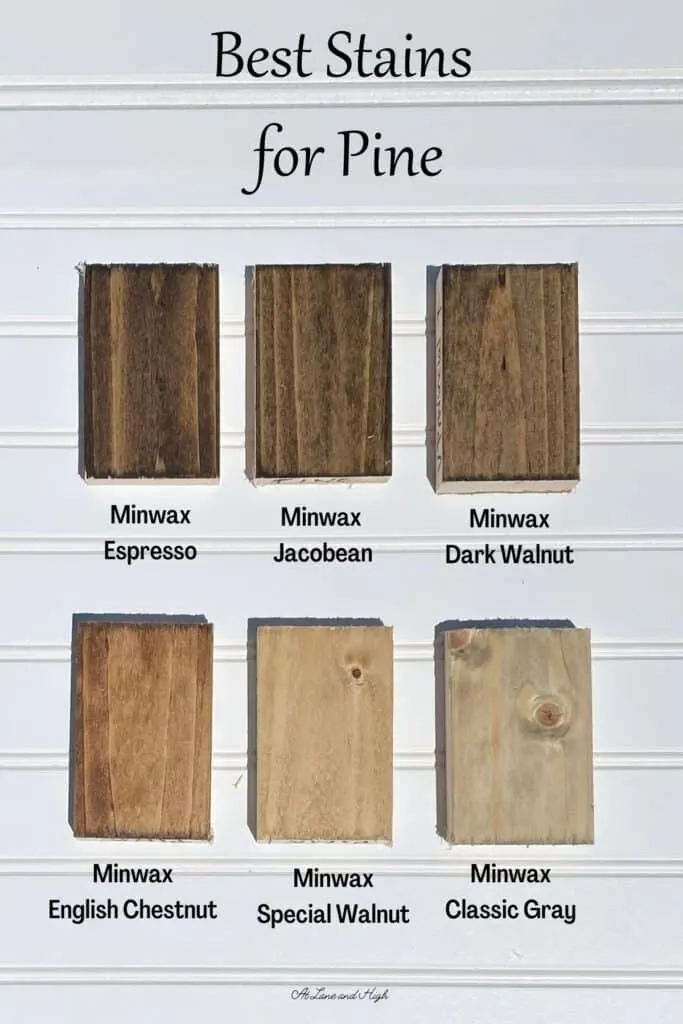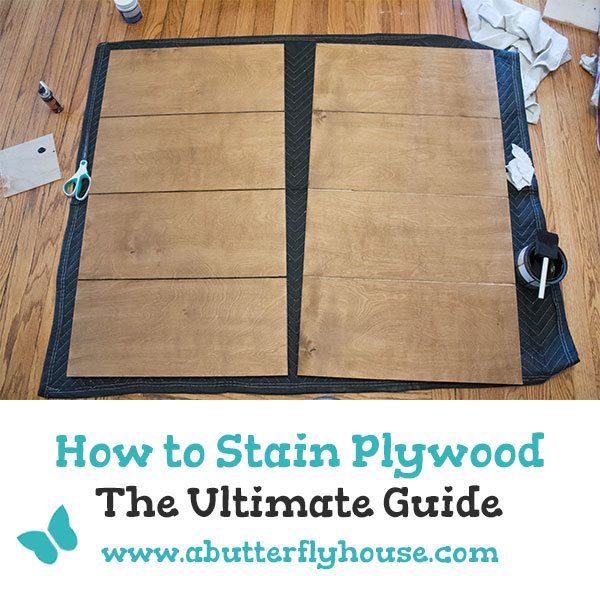Are you wondering if pine plywood stains well? Well, you’ve come to the right place! Staining wood can be a great way to enhance its natural beauty and add a touch of personalization to your DIY projects. In this article, we’ll explore whether pine plywood is a good choice for staining and offer some tips to help you achieve beautiful, long-lasting results.
When it comes to staining, not all wood types are created equal. Pine plywood, with its unique grain patterns and warm color, can be an excellent candidate for staining. However, it’s important to note that pine is a softwood, which means it can absorb stain differently compared to hardwoods like oak or maple. But fret not! With the right techniques and precautions, you can achieve stunning results on pine plywood.
Before you dive into staining your pine plywood, it’s crucial to prepare the wood properly. Sanding the surface smooth and removing any imperfections will ensure an even application of stain. Additionally, applying a wood conditioner before staining can help minimize blotching and ensure a more uniform finish. So, let’s dive in and discover the secrets to staining pine plywood like a pro!

Does Pine Plywood Stain Well? Exploring the Possibilities
Pine plywood is a versatile and popular choice for various woodworking projects. One question that often arises is whether pine plywood stains well. In this article, we will delve into the topic to understand the staining capabilities of pine plywood, the factors that affect the staining process, and tips to achieve desired results. Whether you’re a seasoned woodworker or a DIY enthusiast, this guide will provide you with valuable insights to make informed decisions when it comes to staining pine plywood.
Understanding Pine Plywood and Staining
Pine plywood is a type of plywood made from pine wood. It consists of thin layers of pine veneer glued together, providing strength, durability, and a smooth surface. However, pine wood is known to have a more prominent grain pattern and a tendency to absorb stain unevenly compared to other woods. Therefore, staining pine plywood requires careful consideration and preparation.
When it comes to staining pine plywood, it is essential to understand the characteristics of the wood. Pine has a natural yellowish tone and distinct grain patterns that can add warmth and character to your project. However, if you have a specific color or finish in mind, achieving it on pine plywood may require extra effort.
Factors Affecting the Staining Process
Several factors can influence how pine plywood absorbs and responds to stain. Here are some key factors to keep in mind:
1. Wood Grain: Pine plywood has a prominent grain pattern, which affects how stain is absorbed. The stain may penetrate deeper into the wood in some areas and less in others, resulting in an uneven appearance.
2. Density: Pine wood has varying densities, even within a single board. Areas with higher density may resist absorbing the stain, leading to blotchiness.
3. Preparation: Proper surface preparation is crucial for achieving desirable staining results. Sanding the wood to a smooth finish and using a wood conditioner can help ensure an even stain application.
4. Stain Color and Type: Different stain colors and types can yield varying results on pine plywood. Some stains may emphasize the natural wood grain, while others may create a more even appearance.
Tips for Successfully Staining Pine Plywood
While staining pine plywood can present challenges, with the right techniques and practices, you can achieve beautiful results. Here are some tips to help you successfully stain pine plywood:
1. Precondition the Wood: Before applying the stain, consider using a wood conditioner specifically designed for softwoods like pine. This helps to minimize blotchiness and promote even stain absorption.
2. Test the Stain: Always perform a test on a scrap piece of pine plywood or an inconspicuous area to see how the stain will appear. This allows you to adjust the stain color or application technique as needed.
3. Seal the Wood: To enhance stain absorption and minimize uneven coloration, consider sealing the wood with a sanding sealer or shellac before applying the stain.
4. Apply Multiple Coats: For deeper color and a more uniform appearance, apply multiple thin coats of stain rather than one heavy coat. This allows the stain to penetrate the wood gradually for better results.
5. Follow Manufacturer’s Instructions: Each stain product may have specific instructions for application and drying times. It is crucial to read and follow these instructions carefully for optimal results.
In conclusion, while pine plywood may present some challenges when it comes to staining, with proper preparation, technique, and patience, you can achieve beautiful results. Understanding the characteristics of pine wood, considering the factors that affect the staining process, and following recommended staining techniques will help you achieve the desired finish on your pine plywood projects. With practice and experimentation, you can create stunning pieces that showcase the natural beauty of pine wood while achieving your desired color and finish.
Key Takeaways – Does Pine Plywood Stain Well?
- Pine plywood can be stained well if prepared properly.
- Preparation includes sanding the surface to create a smooth finish.
- Using a pre-stain conditioner can help achieve even stain absorption.
- Pine plywood tends to have a more noticeable grain pattern after staining.
- Choosing the right stain color can enhance the natural beauty of pine plywood.
Frequently Asked Questions
When it comes to staining pine plywood, there are certain considerations to keep in mind. Here are some commonly asked questions about staining pine plywood:
1. How does pine plywood respond to staining?
Pine plywood has a unique characteristic that can make it a bit challenging to stain. The natural properties of pine, such as its tight grain pattern and tendency to absorb stain unevenly, can result in a blotchy appearance if not properly prepared before staining. However, with proper preparation and techniques, pine plywood can be stained beautifully.
To achieve an even and attractive stain on pine plywood, it’s essential to apply a pre-stain conditioner. This conditioner helps to seal the wood, minimizing blotchiness and ensuring a more even absorption of the stain. Sanding the plywood beforehand and using a gel-based stain can also help achieve better results.
2. Can I stain pine plywood without using a pre-stain conditioner?
While it’s technically possible to stain pine plywood without using a pre-stain conditioner, it’s not recommended. The natural properties of pine make it prone to blotching when applying stain directly to the wood. Skipping the pre-stain conditioner often results in an uneven and patchy appearance.
Using a pre-stain conditioner is a crucial step in the staining process for pine plywood. It helps to seal the wood, minimizing blotchiness and allowing for a more consistent color absorption. Investing in a pre-stain conditioner will lead to better results and a more professional-looking finish.
3. Should I use a brush or a rag to apply stain to pine plywood?
Both brushes and rags can be used to apply stain to pine plywood, and the choice depends on personal preference and the desired outcome. Using a brush allows for more control and precision, especially when working on detailed or intricate areas of the plywood surface.
Rags, on the other hand, can give a softer and more subtle finish. They are especially useful for achieving a rustic or aged look. If using a rag, be sure to wear gloves to protect your hands from the stain. Ultimately, experimenting with both methods can help you determine which technique works best for your specific project.
4. Can I use any type of stain on pine plywood?
While you can use various types of stain on pine plywood, some are more suitable than others. Gel stains and oil-based stains tend to work well with pine due to their thicker consistency and slower drying time. These types of stains penetrate the wood more evenly, resulting in a smoother and more consistent finish.
It’s important to avoid water-based stains when staining pine plywood, as they can be difficult to work with and may result in more blotching. If you prefer a water-based stain, consider using a wood conditioner specifically designed for pine and follow the manufacturer’s instructions to achieve the best results.
5. Can I add a protective finish after staining pine plywood?
Absolutely! Adding a protective finish is highly recommended after staining pine plywood to enhance its durability and longevity. Polyurethane, varnish, or lacquer can be applied over the stained plywood to provide a protective layer and enhance the appearance of the finish.
Before applying the protective finish, ensure the stain is completely dry. Use a clean brush or rag to apply the finish in thin, even coats, following the manufacturer’s instructions. Allow each coat to dry before adding subsequent layers, and lightly sand between coats for a smooth and polished final result.

How to stain wood LIKE A PRO! Pine wood staining tips and tricks
Summary
So, does pine plywood stain well? The answer is yes! Pine plywood can absorb stains effectively, but it requires proper preparation. Sanding the surface and applying a wood conditioner beforehand can ensure an even and beautiful stain finish. Additionally, choosing the right type of stain can enhance the natural grain and color of the pine plywood, creating a stunning look for your projects. However, it’s essential to test the stain on a small area first to ensure you achieve the desired result. With the right techniques and products, staining pine plywood can be a successful and rewarding project.
In conclusion, staining pine plywood is entirely possible, but it requires some extra care and attention. By following the proper steps, such as sanding and using wood conditioner, you can achieve a fantastic stained finish. So, get ready to unleash your creativity and enjoy the process of transforming your pine plywood into a beautiful and personalized masterpiece!
